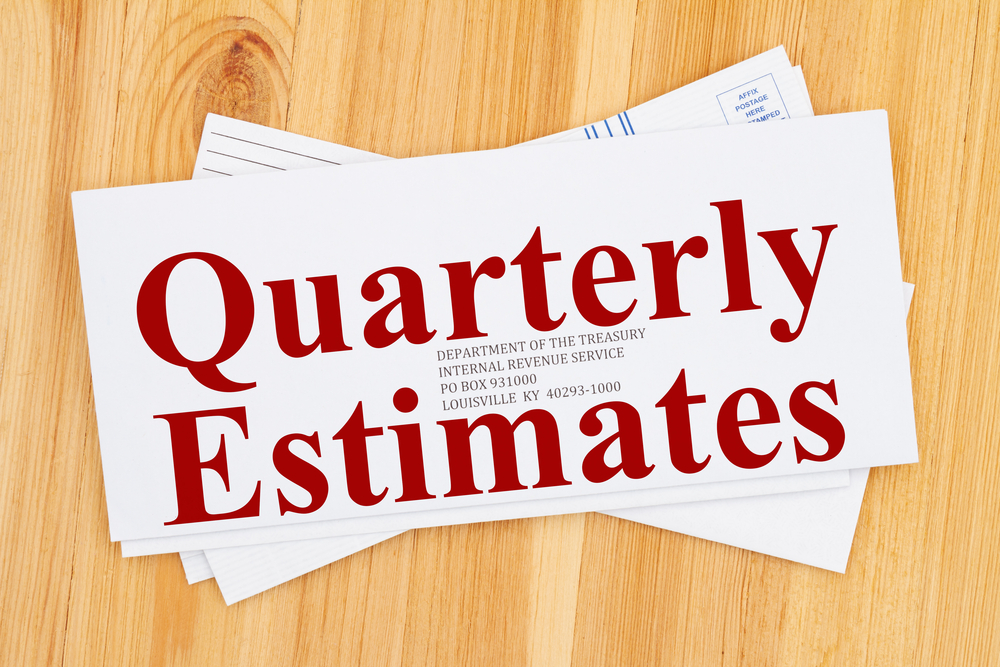Have You Been Making Your Quarterly Estimated Tax Payments? What You Need to Know
 Quarterly estimated tax payments are a crucial aspect of financial management for business owners and freelancers. Understanding the importance, requirements, and strategies surrounding these payments can help you avoid penalties and ensure your business remains financially healthy. Here, we provide a comprehensive guide on what you need to know about making quarterly estimated tax payments.
Quarterly estimated tax payments are a crucial aspect of financial management for business owners and freelancers. Understanding the importance, requirements, and strategies surrounding these payments can help you avoid penalties and ensure your business remains financially healthy. Here, we provide a comprehensive guide on what you need to know about making quarterly estimated tax payments.
What Are Quarterly Estimated Tax Payments?
Quarterly estimated tax payments are payments made to the IRS four times a year to cover the expected tax liability on income that is not subject to withholding. This typically includes income from self-employment, interest, dividends, rent, and alimony. For freelancers and business owners, this system ensures that taxes are paid throughout the year rather than in a lump sum at the end of the tax year.
Why Are They Important?
Making quarterly estimated tax payments is essential because it helps taxpayers manage their tax obligations without facing a large bill at the end of the year. Additionally, the IRS requires these payments to prevent taxpayers from underpaying their taxes. Failure to make these payments can result in penalties and interest charges.
Who Needs to Make Quarterly Estimated Tax Payments?
You are generally required to make quarterly estimated tax payments if you expect to owe at least $1,000 in tax for the year, after subtracting your withholding and refundable credits, and if your withholding and refundable credits are less than the smaller of:
- 90% of the tax shown on your current year’s tax return, or
- 100% of the tax shown on your previous year’s tax return (110% if your adjusted gross income was over $150,000).
Special Considerations for Business Owners and Freelancers
For business owners and freelancers, income can be unpredictable. Therefore, it is crucial to keep track of earnings and expenses to estimate your tax liability accurately. Utilize accounting software or consult with a tax professional to ensure you are making the correct payments.
How to Calculate Quarterly Estimated Tax Payments
So, how do you know how much you should be paying each quarter? Here’s how to calculate what you should be sending to the IRS:
- Estimate Your Income: Begin by estimating your expected income for the year, including all sources of revenue.
- Subtract Deductions and Credits: Deduct any business expenses and apply any tax credits you are eligible for.
- Determine Your Taxable Income: Subtract deductions and credits from your total income to determine your taxable income.
- Calculate the Tax: Use the IRS tax tables to calculate the tax on your taxable income.
- Divide the Tax by Four: Divide the total annual tax by four to determine your quarterly estimated tax payment.
Using IRS Form 1040-ES
The IRS provides Form 1040-ES, Estimated Tax for Individuals, which includes a worksheet to help calculate your estimated tax payments. This form is updated annually and provides the current tax rates and tables.
Payment Method Options
You can make your quarterly estimated tax payments using several methods:
- Electronic Federal Tax Payment System (EFTPS): This is a free service provided by the Department of Treasury for paying federal taxes online.
- Direct Pay: You can pay directly from your bank account through the IRS Direct Pay system.
- Credit or Debit Card: Payments can also be made using a credit or debit card, although processing fees may apply.
- Check or Money Order: If you prefer, you can mail a check or money order with the payment voucher from Form 1040-ES.
Payment Deadlines
Quarterly estimated tax payments are due on the following dates:
- April 15
- June 15
- September 15
- January 15 of the following year
If the due date falls on a weekend or a legal holiday, the payment is due the next business day.
Consequences of Not Making Payments
Failing to make quarterly estimated tax payments or underpaying can result in penalties and interest charges from the IRS. The penalty is calculated based on the amount you underpaid and the period of underpayment. Interest on the underpayment is also charged and is compounded daily.
Not making these payments can also affect your business’s cash flow, as you may be required to make a large lump-sum payment at the end of the year. This can strain your finances and disrupt your business operations.
Strategies to Simplify Quarterly Payments
One effective strategy is to automate your estimated tax payments. By setting up automatic payments through the EFTPS or your bank, you can ensure that payments are made on time without the need to remember each due date.
Regularly reviewing your income and expenses can help you adjust your estimated tax payments as needed. This is particularly important for business owners and freelancers with fluctuating incomes. Adjusting your payments based on actual earnings can help you avoid underpayment penalties.
Consult a Tax Professional
Working with a tax professional can provide valuable insights and assistance in managing your quarterly estimated tax payments. A CPA can help you accurately estimate your tax liability, navigate complex tax laws, and ensure you are taking advantage of all available deductions and credits.
Quarterly estimated tax payments are a critical responsibility for business owners and freelancers. For personalized assistance and expert advice, contact Demian & Company CPAs to speak with one of our experienced tax professionals.